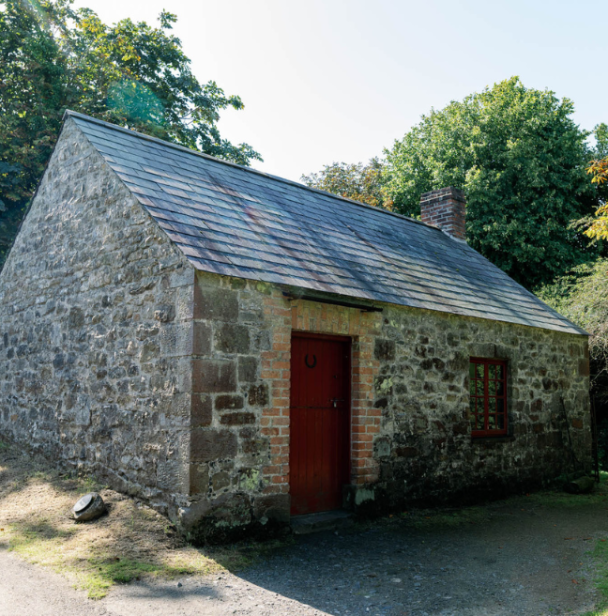Lisrace Forge
Map Location: Rural 'Field' Area, 54
View MapIt was built in the 1830s and came from Lisrace, County Fermanagh. The small blacksmith’s forge was dismantled and moved to the Folk Museum in the early 1960s.
The building was originally a thatched domestic house which was later converted into a forge. The thatch was replaced with a slated roof in the 19th century.
The interior of the forge is typical of small forges found throughout the north of Ireland, with a wooden stance (stopping place) for horses inside the door. The hearth is at the opposite end from the door and, to one side, the large hand operated bellows provided draught for the fire. Set at the corner of the hearth was the 'fizz-trough' in which the blacksmith cooled his tools.
The blacksmith was a very important craftsman in rural communities. His work included the making and repair of agricultural equipment and domestic wrought iron work.
Many rural blacksmiths were also farriers so were responsible for the shoeing of horses and donkeys. They were often knowledgeable in the veterinary treatment and care of horses.
Blacksmithing and farriery were started at Lisrace by the Wilson family. In the early 1900s blacksmith, James Wilson ran the forge, while his young son, Robert acted as his apprentice. Robert Wilson was the last blacksmith to work at Lisrace, he retired in the early 1960s.
Look at the hand-operated bellows which provide draught for the fire, the cooling trough and the anvil.
Sounds from the Forge
The clang of our blacksmith's anvil can often be heard across the museum. Below, you can listen to the sounds of our blacksmith at work. First, the blacksmith steadily stokes the fire with long pulls of air from the bellows. Once the forge is hot enough, the blacksmith heats the metal until it glows red, scraping the scale from its surface before efficiently striking and shaping it on the anvil.
0:00 / 0:00
